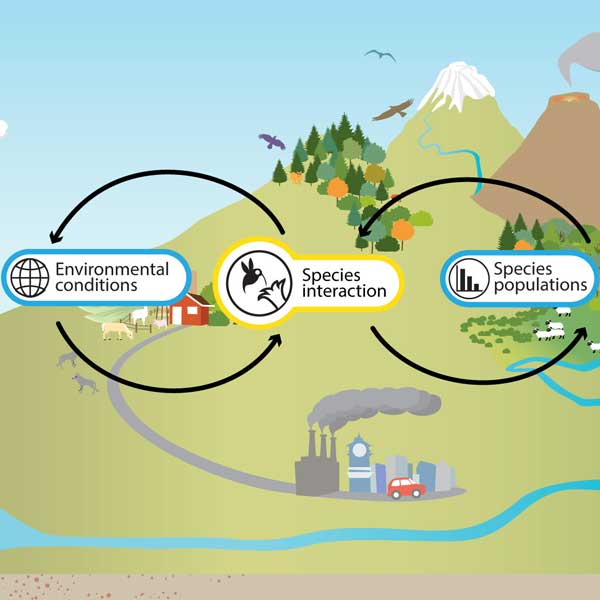There are a vast number of interactions between species. Some interactions are direct – lions killing and eating gazelle, or clown fish living safely within the tentacles of sea anemones. But many more interactions are indirect, and therefore less obvious. For example, lions depend directly on the presence of the plant eaters they hunt, which in turn depend on the plants that they need to eat. Thus, lions depend indirectly on the quality and quantity of plants even though they do not eat plants. A consequence of the direct and indirect interactions between species is that changes in one species, for example, changes in the number of individuals, their health, or their geographic distribution, will almost certainly affect other species and other parts of the Earth system.
Our own species affects a great many other species due to our large population size, ability to cooperate and work in large groups, including our capacity to change habitats and extract resources.
On this page:
- What are Species Interactions?
- Earth System Models about Species Interactions
- How Human Activities Influence Species Interactions
- Example Model of How Human Activities Influence Species Interactions
- Explore the Earth System
- Investigate
- Links to Learn More
For the classroom:
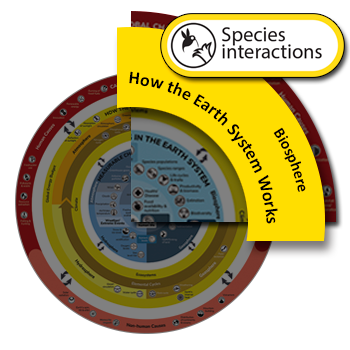
Global Change Infographic
Species interactions are an essential part of How the Earth System Works. Click the image on the left to open the Understanding Global Change Infographic. Locate the species interactions icon and identify other Earth system processes and phenomena that cause changes to, or are affected by, species interactions.
What are Species Interactions?
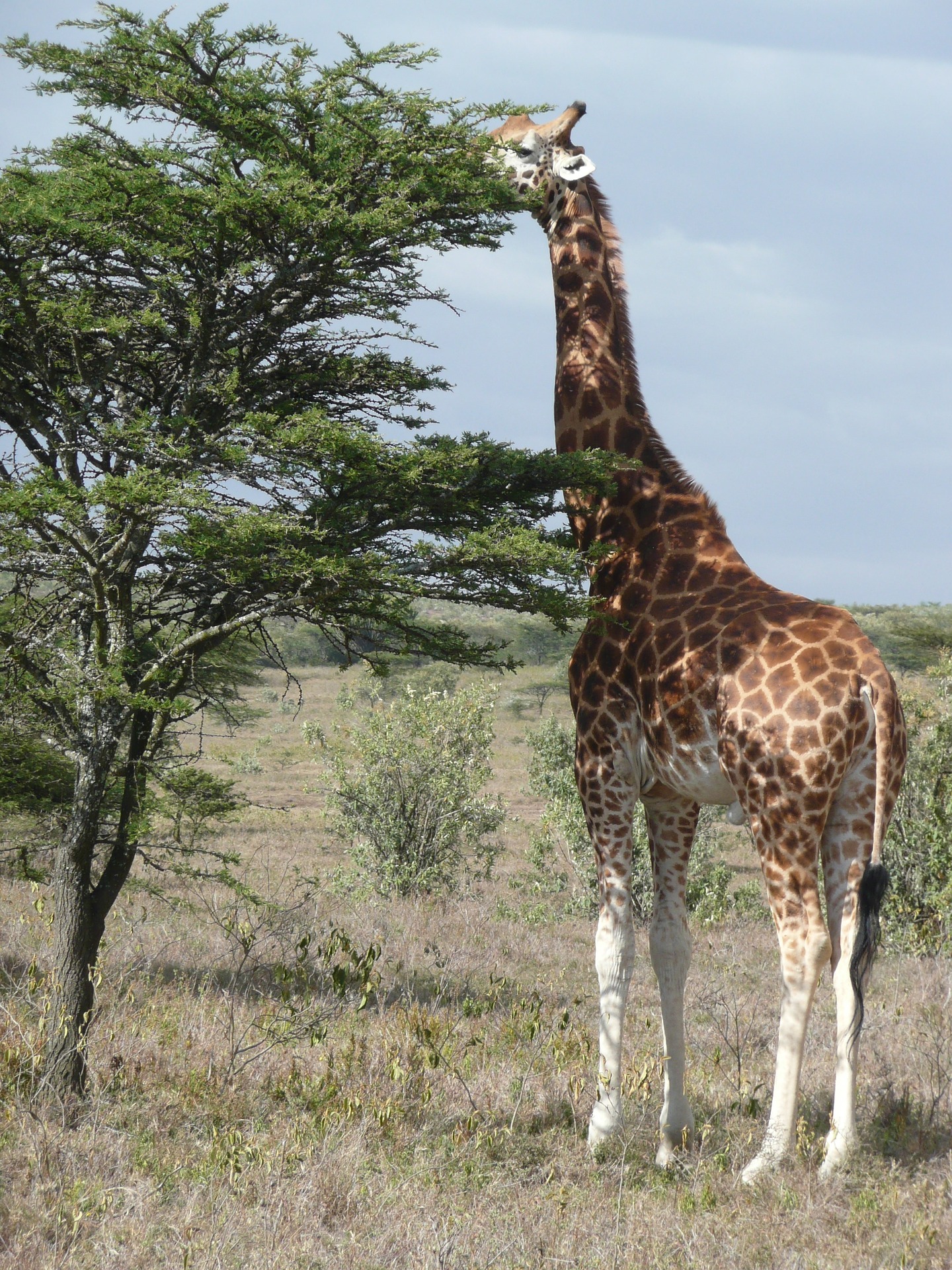
A giraffe feeding on a tree is an example of a direct species interaction. Credit: Pixabay
Species interact and thus affect one another. Species interactions can be direct or indirect, and have positive or negative effects. Direct interactions are the most obvious, for example a giraffe eating the leaves of a tree. This interaction has a positive effect on the giraffe because the giraffe gains nutrition from the tree, and a negative effect on the tree because the tree loses leaves that it needs to photosynthesize to produce energy. However, giraffes also have a direct positive effect on the trees by leaving their droppings on the ground which adds nutrients to the soil, increasing soil quality, and thus promoting tree and other plant growth. This plant growth, in turn, provides food for various herbivores, including giraffes, and therefore giraffes indirectly help support the survival of other herbivorous species. The plant growth also provides shelter and nesting places for smaller animals, including birds and insects, and so the web of indirect species interactions expands to include even more species.
Species interactions affect the size of species populations and thus the biomass and productivity of an ecosystem. Species interactions also drive evolutionary changes that affect their ability to survive and reproduce over many generations. Explore the examples below to learn more about species interactions.
Earth System Models about Species Interactions
Because species interact both directly and indirectly with other species, modeling species interactions within the biosphere can get complicated very quickly. For example, oxygen is produced by photosynthesis, and nearly every organism, including photosynthetic organisms, uses oxygen to break down food into energy through a process called respiration. Thus, almost all species interact indirectly with photosynthetic species, and thus photosynthetic species are relevant to all Earth system models about the biosphere. Some of the complexity of species interactions in the Earth system can be captured with relatively simple models, for example, with the model shown below.
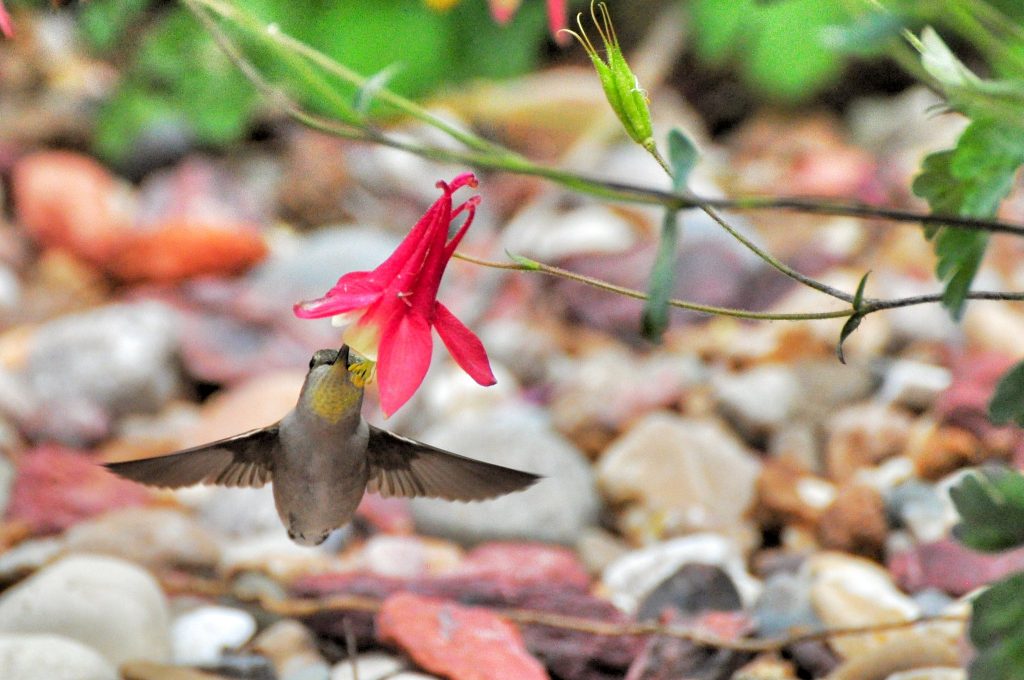
A hummingbird feeding on nectar in a columbine flower. The long spurs that extend off the back of the flower contain the nectar. Credit: Flickr
Below we provide an Earth system models that focus on species interactions. Note that we only include interactions that most directly influence the relevant species, ignoring some direct and the numerous indirect interactions that also affect the species in the model.
Our first Earth system focuses how species interactions can affect evolution of columbine flowers. To understand how this works you need to know that columbines, like most flowering plants, have evolved flower traits (colors and shapes) to attract pollinators, insects and birds, that transport pollen between plants. Pollinators visit columbine flowers to find food, in the form of nectar, that the plant produces. As each pollinator feeds it inadvertently rubs up against the stamens, transferring pollen to the pollinator’s body. Then, as the pollinator moves from flower to flower to feed, some of this pollen rubs of onto other flowers. Thus, as the pollinator travels from flower to flower feeding on the nectar it unintentionally helps pollinate flowers. Hover over the icons for brief explanations; click on the icons to learn more about each topic.
How Human Activities Influence Species Interactions
Human activities directly and indirectly influence species interactions. Our direct effects include large-scale agricultural and farming activities, which increase the population sizes of the food species and decrease the population sizes of species that occupied the habitats transformed by the agricultural and farming activities. Hunting and fishing also decrease species populations sizes of the exploited species. Smaller scale hunting for food can also affects us directly but negatively, for example, via the transmission of harmful animal diseases, such as Ebola and HIV, into human populations from eating wild-caught animals. Indirect human effects on species interactions include habitat change through large-scale agriculture and farming activities, and urbanization. Indirect affects also included the impact of climate change, for example through extreme weather, including drought and fire, as well as through processes such as ocean acidification.
Example Model of How Human Activities Influence Species Interactions
The Yellowstone Wolves
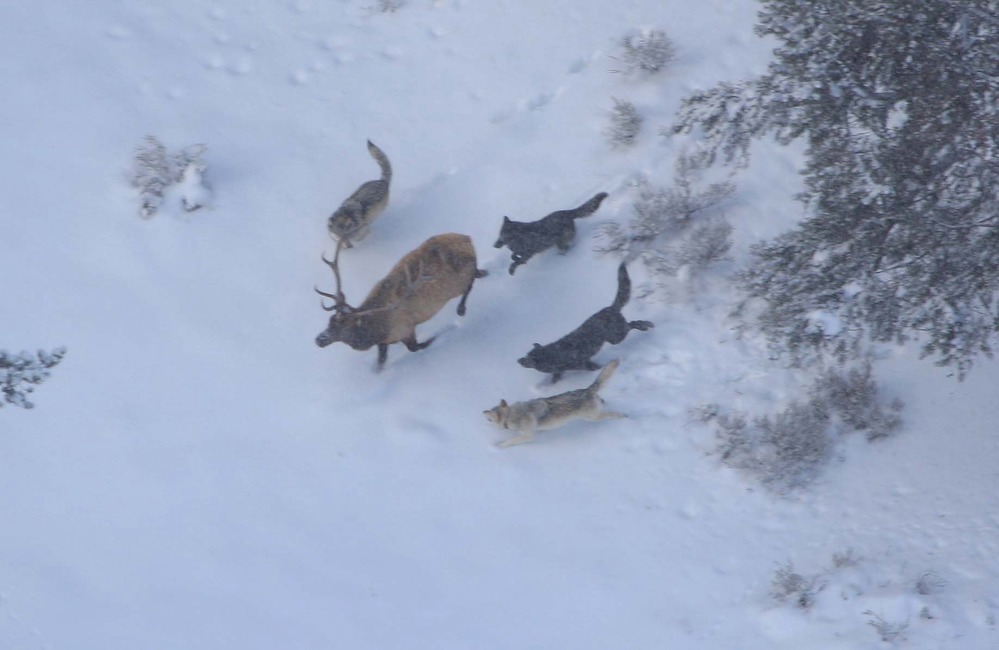
Members of the Druid wolf pack in Yellowstone National Park chase a bull elk. Credit: NPS
Packs of wolves once roamed across most of North America, but were hunted extensively and were exterminated from much of their territory, including Yellowstone Park. The transformation of the Yellowstone ecosystem following their reintroduction in 1995 highlights the ways in which direct and indirect interactions shape ecosystems, and illustrate how human impact can both degrade (with the elimination of wolves) and enrich ecosystems. Hover over the icons for brief explanations; click on the icons to learn more.
Explore the Earth System
Each of the bolded terms on this page (e.g., species populations, productivity and biomass, etc.) and the icons in the Earth system models link to other pages where you can learn more about the processes and phenomena connected to species interactions. Visit these other pages to continue your exploration of the Earth system. Alternatively, explore the Understanding Global Change Infographic and find new topics that are of interest and/or locally relevant to you.
Investigate
Learn more in these real-world examples, and challenge yourself to construct a model that explains the Earth system relationships.
- Evolution of an outbreak
- A country weed with city problems
- Toxic river means rapid evolution for one fish species
